Extraordinary discovery of 12th century abbot's grave: 2012 technology could unmask his identity - and that of a ghost that roams the site
- Carbon dating and pathology to be used on skeleton
- Abbot reckoned to be 'portly' because of curvature of the spine
- Cistercian monastery supposedly 'haunted' by several ghosts
Paul Harris
Source -http://www.dailymail.co.uk/sciencetech/article-2131822/Extraordinary-discovery-12th-century-abbots-grave-2012-technology-unmask-identity--ghost-roams-site.html?ito=feeds-newsxml
For something like seven centuries he had lain undisturbed. He – or at least his remains – survived Henry VIII’s destruction of his abbey in 1537, eluded the grave-robbers that followed, and avoided discovery by Victorian archaeologists. Even deep excavations and the underpinning of the crumbling building in the 1930s failed to unearth him. But the abbot who headed Britain’s second richest and most powerful Cistercian monastery may soon be unmasked – along with the identity, perhaps, of one of the site’s ghosts.
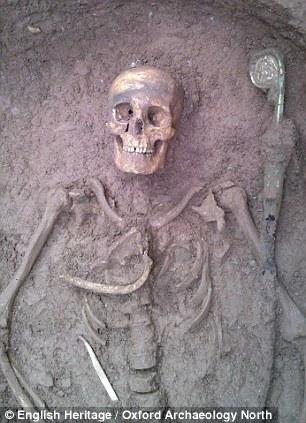
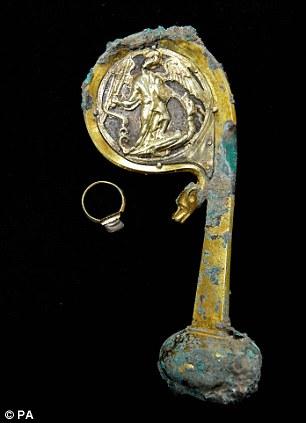
The abbot in his grave, and a ring and the head of a crozier found next to him
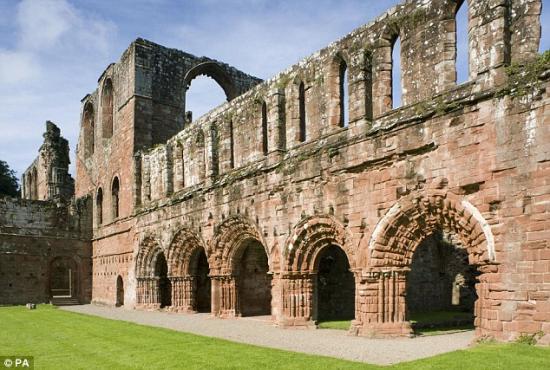
The 12th Century abbot's grave was discovered undisturbed at Furness Abbey in Cumbria two years ago
Two years after his final resting place was uncovered beneath the ruins of Furness Abbey, his secrets – and the treasures he took to his grave – are being scrutinised by 21st century technology and expertise. With the wonders of carbon dating and modern pathological and archaeological knowledge, specialists are confident they can fill a missing chapter in the history of the Lake District Abbey that inspired Wordsworth and Turner. The skeleton of a portly figure was discovered almost by fluke when emergency repairs had to be made to the abbey at Barrow-in-Furness, Cumbria. Cracks had appeared in the ‘mouldered walls’ that featured in Wordsworth’s ‘At Furness Abbey’ verse from his 1805 Prelude, and in some of JWM Turner’s etchings. They were caused by medieval wooden foundations rotting away. Archaeologists and structural engineers called in to examine them dug down and found an undisturbed, unmarked and unknown grave.
Its significance was immediately apparent. Whoever was buried here had been placed in the presbytery – the most prestigious position in the abbey, usually reserved for those held in greatest esteem. With the remains were rare medieval jewellery and a silver and gilt crozier, a senior abbot’s staff of office. The discovery might also shed light, depending on your point of view, on whether the fat abbot might be one of several ghosts said to have been sighted in the ruins. Experts at Oxford Archaeology North, which led excavations, believe the skeleton is that of a man aged 40 to 50.

The discovery of the abbot's grave at the Furness Abbey was almost a complete fluke
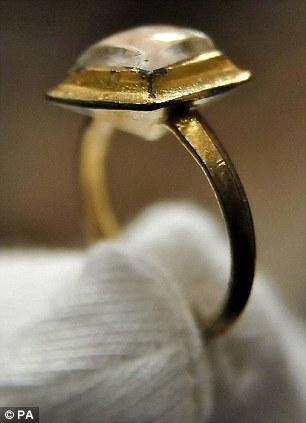
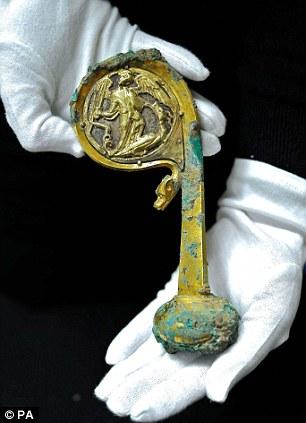
The gilded silver ring found in the grave and a silver and gilt crozier - a senior abbot's staff of office
The curvature of the spine suggests he was obese and perhaps suffering from type-2 diabetes. That is possibly confirmed by the position of his arms, which lie flanked around his girth rather than crossed over his chest. Although he could have died as early as the 1150s, English Heritage curator Susan Harrison believes the grave more likely dates from the 1350s to early 1500s. ‘This is a very significant discovery,’ she said. ‘There has been no comparative grave found for the last 50 years in British archaeology.’ The head of the crozier, an ornamental staff carried by high-ranking members of the church, is gilded copper decorated with silver medallions that show the archangel Michael slaying a dragon. The crook end is decorated with a serpent’s head. A small section of the wooden staff survives – as does part of the cloth the abbot held to prevent his hand tarnishing the crozier. The ring he wore is gilded silver set with a gemstone of white rock crystal or white sapphire. It is possible that a hollow behind the stone contains a relic – perhaps what the monastery believed to be part of the body of a saint. Both items are to go on public display at the abbey over the Bank Holiday weekend of May 4 to 7. In its heyday, Furness Abbey was fabulously wealthy. But after the dissolution of monasteries in the 1530s it was stripped of virtually all its treasures and left to crumble. English Heritage’s Susan Harrison said that, although the crozier and ring were rare, of more interest was the fact that such an important grave could be excavated and analysed using the most modern techniques to harvest as much information as possible. Dating the grave could even produce a name for the abbot when matched against historical listings. And the ghost? ‘I’d like to thoroughly quash all the ghost stories around this and concentrate on reality,’ Miss Harrison said.